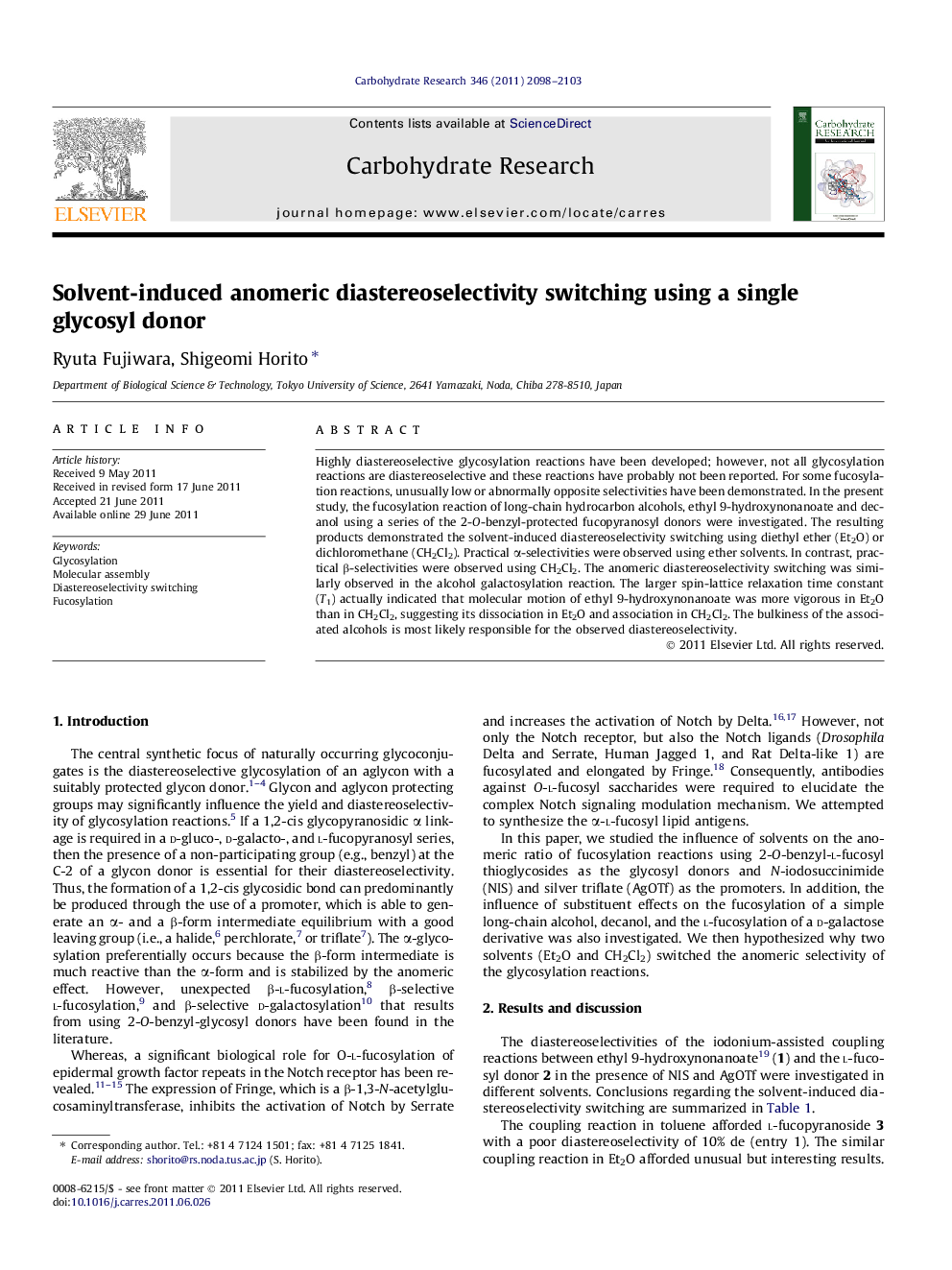| Article ID | Journal | Published Year | Pages | File Type |
|---|---|---|---|---|
| 1390454 | Carbohydrate Research | 2011 | 6 Pages |
Highly diastereoselective glycosylation reactions have been developed; however, not all glycosylation reactions are diastereoselective and these reactions have probably not been reported. For some fucosylation reactions, unusually low or abnormally opposite selectivities have been demonstrated. In the present study, the fucosylation reaction of long-chain hydrocarbon alcohols, ethyl 9-hydroxynonanoate and decanol using a series of the 2-O-benzyl-protected fucopyranosyl donors were investigated. The resulting products demonstrated the solvent-induced diastereoselectivity switching using diethyl ether (Et2O) or dichloromethane (CH2Cl2). Practical α-selectivities were observed using ether solvents. In contrast, practical β-selectivities were observed using CH2Cl2. The anomeric diastereoselectivity switching was similarly observed in the alcohol galactosylation reaction. The larger spin-lattice relaxation time constant (T1) actually indicated that molecular motion of ethyl 9-hydroxynonanoate was more vigorous in Et2O than in CH2Cl2, suggesting its dissociation in Et2O and association in CH2Cl2. The bulkiness of the associated alcohols is most likely responsible for the observed diastereoselectivity.
Graphical abstractFigure optionsDownload full-size imageDownload as PowerPoint slide
